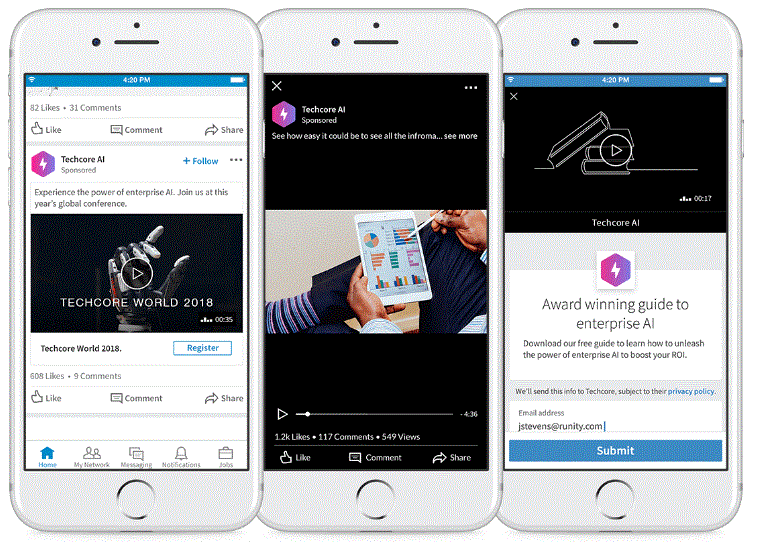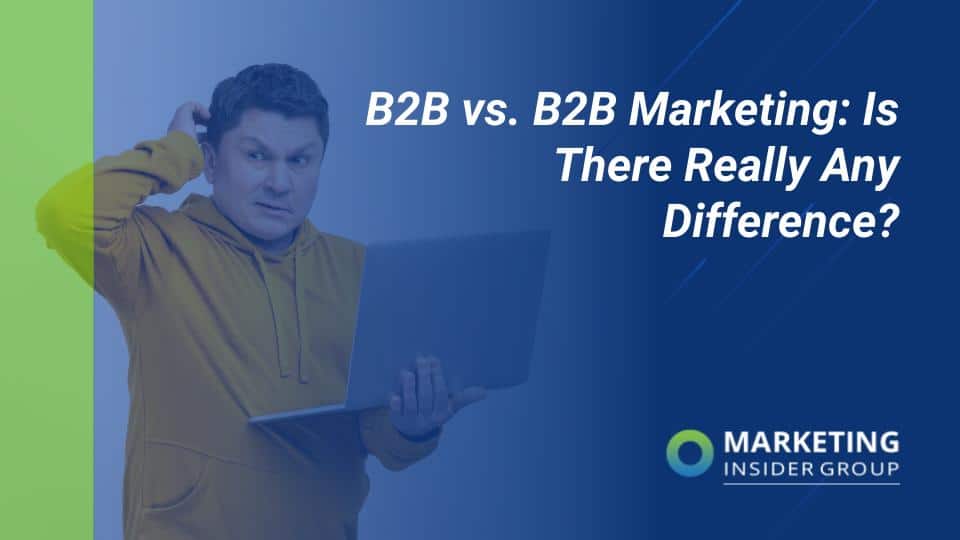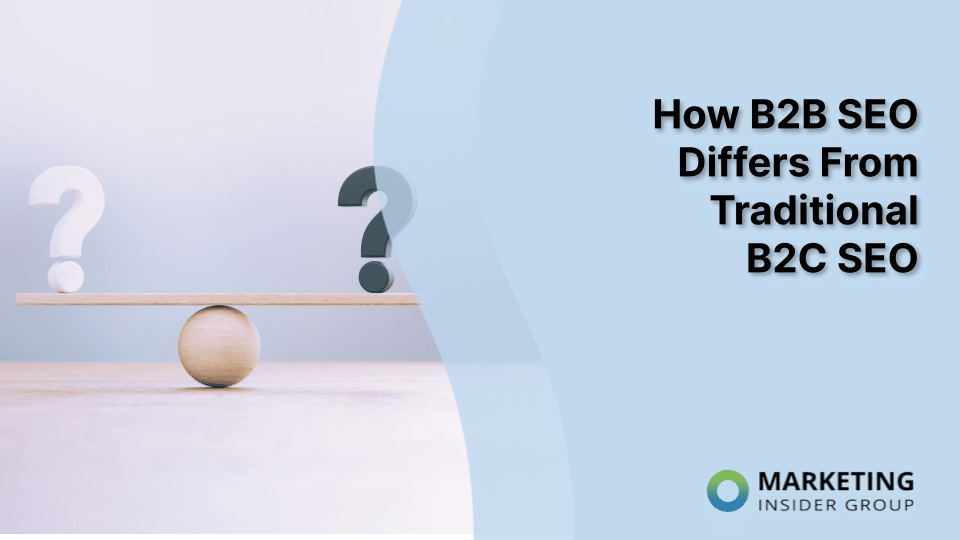
Building Brand Trust in B2B vs. B2C: What’s the Difference?
Building a trusted brand is everything when it comes to the long-term success of a company. Wise B2B and B2C marketers alike work hard to build brands that not only win attention from prospects and customers, but also win the kind of trust that results in strong customer relationships and retention.
While the B2B sales cycle has grown to resemble the B2C sales cycle—in terms of customer demands for convenience and immediacy, a seamless shopping experience and autonomy—B2B and B2C markets are still different when it comes to trust. In B2B, buying decisions are still bigger and are usually made with the approval of more parties than just the prospect who first encounters your content.
In this post, we look at three major ways that B2C brands build trust, and adapt them for B2B markets.
3 Ways to Build Brand Trust in B2B [Adapted from B2C]:
- Create polished and professional content: be friendly, but not overly conversational, and demonstrate your expertise.
- Use LinkedIn as your primary video marketing medium: B2B customers trust LinkedIn the most of all social media. As video marketing grows in prominence, sharing on the right platform will be the difference between winning and losing.
- Be wise and watchful about public relations: brand awareness does not equal trust.
1. Polish and Professionalism are Still Crucial
This isn’t to say that B2C brands don’t present themselves professionally, but brands dialogue with customers differently depending on the nature of the transaction and who the customer is. If a customer is shopping for clothes for an upcoming vacation, they’re expecting a different conversational tone and approach than a customer looking for vital resources to use to grow their business.
B2C brands often build trust by taking a more familiar tone that’s almost less “polished” in their marketing content to give themselves a “down to earth” appearance that builds a friendly rapport.

B2B companies can do the same up to a point, but should still contain enough professional vocabulary to show that even though you’re human, you still do what you do with excellence. Exhibiting your expertise isn’t the only reason to do this: sometimes attempts to be overly-personal and relatable can be perceived as disingenuous or clunky, which works against your company’s trust factor.
2. Video Marketing (and Its Medium) is (Almost) Everything
Video marketing is only growing in prominence. Marketing videos help you build trust with prospects and customers by being entertaining and informative. In order for your marketing videos to effectively build that trust though, you need to get them to your audience through the right means.
B2C brands primarily use YouTube and Instagram for their video marketing. These brands will connect with vloggers and influencers who, in turn, create video content such as the ever-popular “un-boxing” videos (that’s when the vlogger opens and samples a product to showcase it from the customer’s perspective). This type of marketing doesn’t translate to B2B since B2B products and services don’t always lend themselves to an “un-boxing” format. Not to mention, B2B customers aren’t likely looking to YouTube as a credible source for product information and reviews.
YouTube may rule the world of B2C video marketing, but our data shows that B2B customers trust LinkedIn the most out of all social networks.1
Of course, YouTube still has its place in B2B as a medium for decision-stage or post-sale content like tutorials and product information, but with LinkedIn’s video-sharing capabilities, you can share marketing videos and use the trust customers place in LinkedIn to supplement their trust in yours. Best, you can tell brand stories, drive traffic to your website, and collect high-quality leads with native videos in LinkedIn Sponsored Content.

B2B marketing videos shared through LinkedIn should look clean, well-lit and have closed captions free of errors. And, creating these videos is simpler that it sounds: it’s easy to find stock footage, free music and user-friendly editing programs that let you create professional-looking videos without being a Hollywood mogul.
3. Brand Awareness from PR Does Not Equal Trust
B2C companies can often benefit from being well-known, even if they’re not widely trusted. E-cigarette brands, for example, have benefited from creating large presences: their promotional materials wallpaper gas stations, convenience stores and billboards.
This brand presence is enough to help an e-cigarette company’s products obtain and retain popularity even as news stories about the dangerous health consequences of using their products begin to break the trust customers had with these companies.
B2B relationships are different. Being widely known doesn’t mean as much if your company doesn’t seem stable and trustworthy. Data shows that B2B customers’ trust of Amazon declined steeply since 2018.1 While there are several possible reasons for this decline, it’s highly likely that the company’s PR efforts are a significant factor. Your company’s reputation is everything to your long-term success.
Which is why you can’t ignore public relations as part of your integrated marketing plan. Stay ahead of potential issues and work proactively to build a reputation as a reliable, trustworthy brand.
It’s tempting to just throw most of your budget and effort at fostering brand awareness, particularly for marketers at smaller, newer companies. However, if you narrow your focus to just spreading awareness without building a strong reputation and cultivating trust, you’ll bring in a mixed bag of results:
- Prospects and customers will be aware of your brand, but perhaps not aware of what you do or why you do it. In other words: you’ll be talking, but you won’t really be saying anything.
- When prospects become aware of your brand by learning about positive experiences your customers have had, that’s a positive outcome for you, but the opposite (learning of negative experiences) can also happen. If you aren’t focusing on building trust and managing your brand’s reputation, prospects are open to any information that comes their way.
- Awareness will only take you so far: brand awareness is a valuable metric, but it doesn’t show the whole picture. A company may appear to have strong brand awareness, but they might be achieving it by running too many ads through the wrong channels. Your company doesn’t want to be widely known for the wrong reasons.
Wrapping Up
Maybe the best way to describe the difference between building trust in B2B as opposed to B2C is with the following analogy: as a marketer, you’ve built your professional relationships in a similar way to how you’ve built your personal friendships, but you know that people have slightly different expectations when they meet you in a professional capacity.
In the same way, B2B and B2C customers want to see many of the same elements when they interact with brands, but they need a little more professionalism, expertise and information before they proceed on their B2B buyer’s journey. By following the guidelines in this article, you can build long-lasting, trusting relationships with your B2B customers that rival even the most profitable B2C companies.
References:







Thanks for the great tips! I’m always telling people that B2B and B2C marketing are more similar than they think, but there are definite differences and we have to take those into account, too.
Nice article. It helped me understand difference between B2B and B2C.